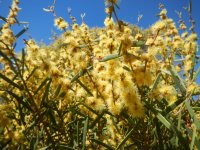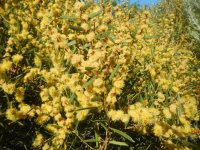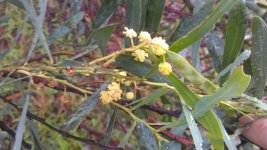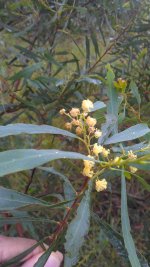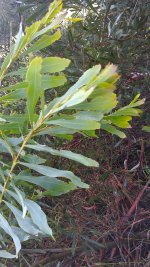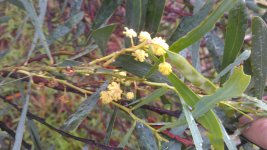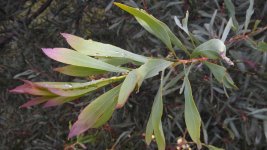-
Members of the previous forum can retrieve their temporary password here, (login and check your PM).
You are using an out of date browser. It may not display this or other websites correctly.
You should upgrade or use an alternative browser.
You should upgrade or use an alternative browser.
Botany Acacia and Mimosa Identification Thread
- Thread starter endlessness
- Start date
Growing logs with advice and results.
Migrated topic.
the pics look pretty good for i.d i'm just not familiar with the species... i'll keep looking because it looks like a tree i've seen in an identificaiton guide before
I found this, but i'm not 100% up to speed on all the lingo, so maybe you might be able to have a look?
DreaMTripper
Rising Star
EST4L pics in post 527 looks like a pic I posted a few months back the phyllodes are very similar , identified as a.iteaphylla in July if iirc so that may be a good place to start. It had ball style flowers.
I found a tree some time back and revisited again recently out of curiosity.
It has pods as depicted for a.mucronata but phyllodes light green rounded and arranged on the stem like a.longifolia but shorter and wider like a.sophorae, any idea what this could be? It did have abundant flowers on rods in July.
I found a tree some time back and revisited again recently out of curiosity.
It has pods as depicted for a.mucronata but phyllodes light green rounded and arranged on the stem like a.longifolia but shorter and wider like a.sophorae, any idea what this could be? It did have abundant flowers on rods in July.
DreaMTripper
Rising Star
masterO said:Hello guys i found this
1. http://tinypic.com/r/261genr/5
2. http://tinypic.com/r/2vvkys7/5
but i am lil confuse about the species after reading the List of Acacia species from wiKi --> List of Acacia species known to contain psychoactive alkaloids - Wikipedia
please can anyone help me to identify the plant
Hey, more info needed, country, state photographed in and a close up of phyllodes and bark also, pods if present.. Ive come to learn pods, glands and bark type are better for id'ing. Some species seem to have almost identical phyllodes.
I saw one recently that couldve been a maidenii, implexa or floribunda with narrow hooked phyllodes I'm still baffled as all the pods are tightly coiled...will post a photo soon.
cubeananda
Interdependent Researcher
So yesterday my neighboor planted this:

And more photos here, i can always take more specific photos if necessary :lol:
Its certainly not native (most likely) to where we are, any ideas what it could be?

And more photos here, i can always take more specific photos if necessary :lol:
Its certainly not native (most likely) to where we are, any ideas what it could be?
DreaMTripper
Rising Star
I saw this the other day and I am baffled what species it is, it looks like the labelled a.floribunda at the botanical gardens however as you can see the pods are
coiled and as far as I am aware floribunda has straight or slightly curved pods. Any ideas?

Here is the same tree from stood back..

Here is the labelled a.floribunda from the Botanical Gardens..
 Ive just noticed the same bow in the trunk so they are clearly the same species..So do a.floribunda pods coil?
Ive just noticed the same bow in the trunk so they are clearly the same species..So do a.floribunda pods coil?
A bit closer up..

Below is one that I suspect is a strain of a.pycnantha ...

Possibly came from this tree that is nearby? There are also many a.implexa nearby is it possible it hybridized with a.pycnantha?

Vastly different to this pycnantha that was nearby also..

Im also curious about this one seen recently.. a.verniciflua? Nice looking plant very bitter phyllodes, leathery and slightly furry to the touch.

Close up..

Even closer

and the trunk of another very nearby..

Finally another from the Botanical Gardens

Sorry for the bombardment haven't been near a PC in weeks! If anyone has time and curiosity it would be great to know what they are especially the second to last one
but in the meantime I will try and suss it out and post back if I find out
coiled and as far as I am aware floribunda has straight or slightly curved pods. Any ideas?

Here is the same tree from stood back..

Here is the labelled a.floribunda from the Botanical Gardens..

A bit closer up..

Below is one that I suspect is a strain of a.pycnantha ...

Possibly came from this tree that is nearby? There are also many a.implexa nearby is it possible it hybridized with a.pycnantha?

Vastly different to this pycnantha that was nearby also..

Im also curious about this one seen recently.. a.verniciflua? Nice looking plant very bitter phyllodes, leathery and slightly furry to the touch.

Close up..

Even closer

and the trunk of another very nearby..

Finally another from the Botanical Gardens

Sorry for the bombardment haven't been near a PC in weeks! If anyone has time and curiosity it would be great to know what they are especially the second to last one
but in the meantime I will try and suss it out and post back if I find out
yeah I've been and seen the "floribunda" at the botanic gardens..beautiful tree..surprisingly though they mislabled it and its actually acacia maidenii. coiled pods are a good confirmation and you'll notice when it flowers again that its flowering habit is nothing like that of floribunda
not sure about the 2nd tree being a strain of pycnantha or not.. would be good to see more photos
last one is a form of acacia melanoxyn
not sure about the 2nd tree being a strain of pycnantha or not.. would be good to see more photos
last one is a form of acacia melanoxyn
marshman
Born and raised in central Australia to a single w
sorry bit more info in Melbourne Australia, of all the acacias I have come across the leaves are the darkest green fell in love with it as soon as I seen her 
Attachments
DreaMTripper
Rising Star
I believe thats retinodes or saligna marshman http://www.florabank.org.au/lucid/key/species navigator/media/html/Acacia_saligna.htm when you find out let us know! They do have a seductive mysterious vibe! Ive seen many on roadsides. I have suspicions it can hybridize with a.pycnantha..
curious traveller
Rising Star
acacia experienced people only...
swim has been doing some primary test's into the content levels of acacia's in swim's area (south east Queensland Australia).
swim has just taken (regretfully)a sample of A. Maidenii x A. Longifolia bark (85% sure of correct identification)(approx age 8 yrs)swim did the usual (take a strip from either side from 1 n a half feet up to about 2-3 inches from the ground) an as per always the thin strips (as swim never dig's hard rather shave til swim get's close to the slimey bark layer(live bark)) resembled mhrb strip just thinner.
unfortunately swims knife slipped and got under the live bark level tearing a big section of bark from the tree (as to why swim regret's it now as swim did permanent damage to this tree) and reveling the most interesting live bark. instead of its usual white/yellow/creamy/brown slimey looking live bark you expect swim was confronted by this blood red area (patch only no bigger than a adult hand (approx))
this area of living bark had quite a different feel/texture than the other live bark in the area. and was more than resinous (which was quick to dry on swim's fingers as swim worked removing the area in question.
now without any unhelpful attitudes or misinformation (as i seen it around a bit) will this be fine to use and would swim be correct in their assumption that it is of a higher alkaline content that the rest??
next question is off topic slighty how ever we are still talking about an acacia ex.( cooked A-B- ether / heptane mix, with naptha washes)so with that in mind this ex. has emulsified on swim to which swim:
1 added more lye (unsuccessful)
2 took temp higher an gently stirred then let sit (unsuccessful)
3 added more lye at temp to allow over saturation in aqua layer (slight success yet not enough)
4 added sea salt at temp(swim knows, an yet here swim is with swim's head down asking for help)(worked very quickly)
beautiful.......... wait wtf is that swim notices, there seems to be jelly xtals forming in the ether/heptane at room temp (wtf) thought it might be a carry thru of salt or lye (as what else could these white smokey xtals b) swim made a slight base mix ph approx 8-10 (to keep the goodies in the ether) added the ether to this base an immediately noticed slight ripples in the aqua layer as though something was devolving in to the aqua layer success gently mixed until the saturation level was reached (ph14 measurement confirmed this) not completely gone tho so swim 3/4 emptied the aqua layer and refilled with hot water to allow for a greater sat. point. same results better but not gone repeated the process again an now have a aqua layer with a ph 0f 7 and still the over saturated look to the ether (if that makes sense) so swim has water washed as much lye an salt from the mix as possible...
does anyone have any constructive advice? has swim carried something thru or does swim have super spice from spain in there?
swim has been doing some primary test's into the content levels of acacia's in swim's area (south east Queensland Australia).
swim has just taken (regretfully)a sample of A. Maidenii x A. Longifolia bark (85% sure of correct identification)(approx age 8 yrs)swim did the usual (take a strip from either side from 1 n a half feet up to about 2-3 inches from the ground) an as per always the thin strips (as swim never dig's hard rather shave til swim get's close to the slimey bark layer(live bark)) resembled mhrb strip just thinner.
unfortunately swims knife slipped and got under the live bark level tearing a big section of bark from the tree (as to why swim regret's it now as swim did permanent damage to this tree) and reveling the most interesting live bark. instead of its usual white/yellow/creamy/brown slimey looking live bark you expect swim was confronted by this blood red area (patch only no bigger than a adult hand (approx))
this area of living bark had quite a different feel/texture than the other live bark in the area. and was more than resinous (which was quick to dry on swim's fingers as swim worked removing the area in question.
now without any unhelpful attitudes or misinformation (as i seen it around a bit) will this be fine to use and would swim be correct in their assumption that it is of a higher alkaline content that the rest??
next question is off topic slighty how ever we are still talking about an acacia ex.( cooked A-B- ether / heptane mix, with naptha washes)so with that in mind this ex. has emulsified on swim to which swim:
1 added more lye (unsuccessful)
2 took temp higher an gently stirred then let sit (unsuccessful)
3 added more lye at temp to allow over saturation in aqua layer (slight success yet not enough)
4 added sea salt at temp(swim knows, an yet here swim is with swim's head down asking for help)(worked very quickly)
beautiful.......... wait wtf is that swim notices, there seems to be jelly xtals forming in the ether/heptane at room temp (wtf) thought it might be a carry thru of salt or lye (as what else could these white smokey xtals b) swim made a slight base mix ph approx 8-10 (to keep the goodies in the ether) added the ether to this base an immediately noticed slight ripples in the aqua layer as though something was devolving in to the aqua layer success gently mixed until the saturation level was reached (ph14 measurement confirmed this) not completely gone tho so swim 3/4 emptied the aqua layer and refilled with hot water to allow for a greater sat. point. same results better but not gone repeated the process again an now have a aqua layer with a ph 0f 7 and still the over saturated look to the ether (if that makes sense) so swim has water washed as much lye an salt from the mix as possible...
does anyone have any constructive advice? has swim carried something thru or does swim have super spice from spain in there?
curious traveller
Rising Star
hey bloke, most people here wont comment on this as it is lacking a lot of information like location for a start.... shame really cause the tiniest amount of advise from some of these guy could stop some noobs from smoking some bad shit... but in saying that do the research yourself just google images til your confident you can make a correct identification
curious traveller
Rising Star
that or post it in the actual acacia identification thread
aussietripper
Rising Star
Gday everyone i have some photos that i need some help with to identify if they are active or not thanks everyone, also the season for psilocybin cubensis mushrooms has started here in nsw found some yesterday if anyone was wondering i have been searching for weeks
Attachments
-
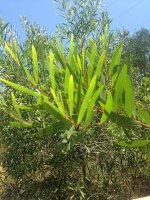 1471753_1413742048860712_285100410_n.jpg184 KB · Views: 0
1471753_1413742048860712_285100410_n.jpg184 KB · Views: 0 -
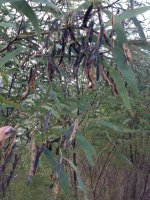 1471314_1413745815527002_1850768894_n.jpg165.8 KB · Views: 0
1471314_1413745815527002_1850768894_n.jpg165.8 KB · Views: 0 -
 1470401_1413741815527402_1759390193_n.jpg183.2 KB · Views: 0
1470401_1413741815527402_1759390193_n.jpg183.2 KB · Views: 0 -
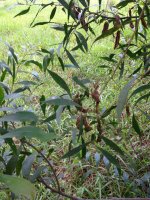 1465143_1413741798860737_128816635_n.jpg192.3 KB · Views: 0
1465143_1413741798860737_128816635_n.jpg192.3 KB · Views: 0 -
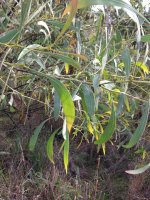 1459746_1413745742193676_1496569568_n.jpg177.2 KB · Views: 0
1459746_1413745742193676_1496569568_n.jpg177.2 KB · Views: 0 -
 1459681_1413741848860732_1322256645_n.jpg219.9 KB · Views: 0
1459681_1413741848860732_1322256645_n.jpg219.9 KB · Views: 0 -
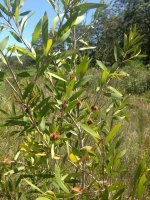 1458690_1413742092194041_1175349487_n.jpg175.8 KB · Views: 0
1458690_1413742092194041_1175349487_n.jpg175.8 KB · Views: 0 -
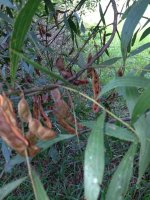 1452571_1413741772194073_705291144_n+(1).jpg137.2 KB · Views: 0
1452571_1413741772194073_705291144_n+(1).jpg137.2 KB · Views: 0 -
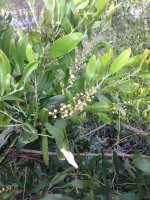 1452314_1413745798860337_883158429_n.jpg141.9 KB · Views: 0
1452314_1413745798860337_883158429_n.jpg141.9 KB · Views: 0 -
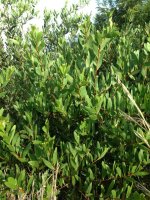 1451493_1413745775527006_159289506_n.jpg181.9 KB · Views: 0
1451493_1413745775527006_159289506_n.jpg181.9 KB · Views: 0 -
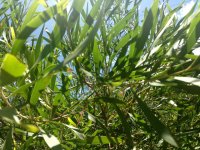 1450760_1413742072194043_1581346757_n.jpg146 KB · Views: 0
1450760_1413742072194043_1581346757_n.jpg146 KB · Views: 0 -
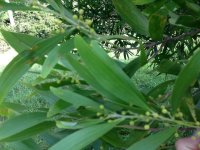 1450096_1413741728860744_874414844_n.jpg102.2 KB · Views: 0
1450096_1413741728860744_874414844_n.jpg102.2 KB · Views: 0 -
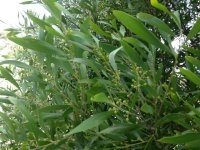 578119_1413741742194076_1985677396_n.jpg128.7 KB · Views: 0
578119_1413741742194076_1985677396_n.jpg128.7 KB · Views: 0 -
 mushyy.jpg84.7 KB · Views: 0
mushyy.jpg84.7 KB · Views: 0
aussietripper
Rising Star
anyone
aussietripper
Rising Star
These pics where all from around mid north coast NSW if that helps can anyone confirm any of these to be Acacia maidenii
Seldom
Wiradjuri
only because you posted these at the corroboree aswell, under the name goinpiggn420 (!!!), i will help as much as i can: first three come from from subgenus 'plurinerves', next 2 have phyllode and growth habit of acacia melonoxylon, 7th from the top may be acacia longifolia, next looks like Acacia penninervis, falcata, falciformis or a related species, and second last photo may be acacia longifolia.
Don't eat the mushroom!
Don't eat the mushroom!

